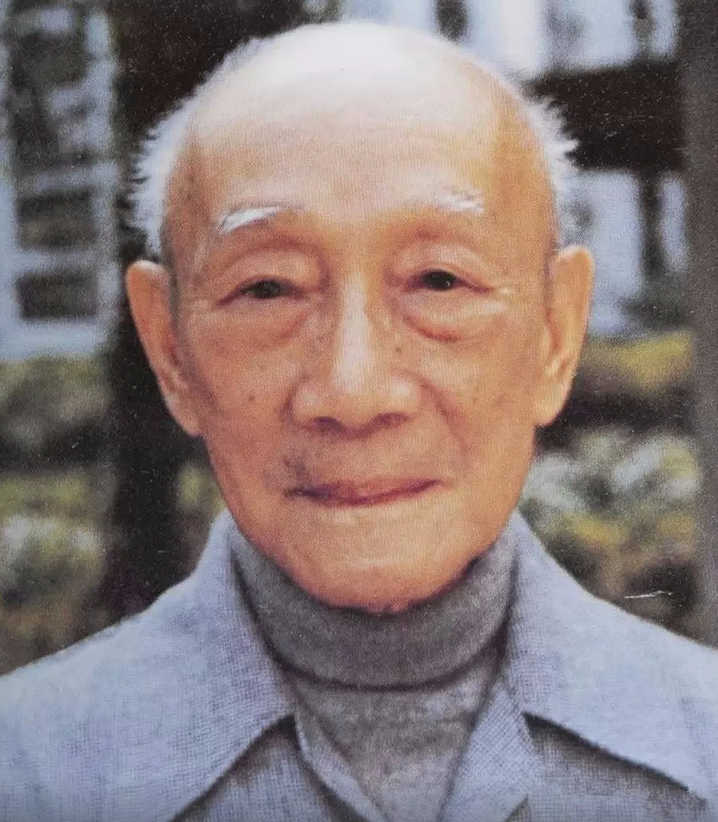Lin Fengmian
Lin Fengmian (November 22, 1900 – August 12, 1991), originally named Shaoqiong, styled Fengming, later changed to Fengmian, was born in Meizhou, Guangdong, and was a renowned modern Chinese painter and art educator, as well as the first president of the National Academy of Art (now renamed China Academy of Art)[1]. 7 images. He loved painting from childhood and was an advocate and representative figure of the artistic concept of "integration of East and West," specializing in depicting court ladies, Peking opera figures, and fishing village scenes. His representative works include "Spring Sunshine," "Riverside," and "Court Lady." After graduating from Meizhou Middle School in 1917, he was admitted to the Shanghai Academy of Fine Arts. In 1918, he participated in the work-study program and went to France for further studies. After returning to China in 1925, he served as president and professor of the National Beiping Special School of Art. In 1928, at the invitation of Cai Yuanpei, he went to Hangzhou to oversee the establishment of the National Academy of Art (later the China Academy of Art) and became its president. He advocated the educational philosophy of "inclusiveness and academic freedom," widely recruiting talent without rigid constraints[2]. On August 12, 1991, at 10:00 a.m., he passed away at Hong Kong Sanatorium & Hospital due to complications from heart disease and pneumonia, at the age of 91[3].
Lin Fengmian (1900–1991), originally named Shaoqiong, styled Fengming, later changed to Fengmian, was a native of Ge Gongling Village, Bai Gong Town, Meixian County, Guangdong[5].
He was born into a poor peasant family. His father, Bo'en, was also a stonemason skilled in carving regular script inscriptions on steles. From childhood, Fengmian loved painting, and his school assignments during middle school were often praised by his teachers.
Mister Lin Fengmian was a master of 20th-century Chinese art and a key founder of modern Chinese art education, known as a pioneer of modern Chinese art. He was an advocate, pioneer, and most important representative of the artistic ideal of "integration of East and West," promoting the educational philosophy of "inclusiveness and academic freedom." As the first president of the National Academy of Art (the predecessor of the China Academy of Art), he cultivated a large number of renowned artists, including Li Keran, Wu Guanzhong, Wang Chao-wen, Ai Qing, Zhao Wuji, Zhao Chunxiang, and Zhu Dequn. He was also among the earliest painters to reform traditional Chinese painting, exploring ways to combine the strengths and aesthetics of oil painting with traditional Chinese ink painting. His works profoundly influenced modern Chinese painting and he is hailed as the "Father of Modern Chinese Painting." He published the essay collection "Art Colloquium" and the painting anthology "Complete Collection of Lin Fengmian." After the founding of the People’s Republic of China, he served as vice-chairman and later chairman of the Shanghai Branch of the Artists Association, a member of the Shanghai Municipal Committee of the Chinese People's Political Consultative Conference, and advisor to the China Artists Association[8-9].
Lin Fengmian was born on November 22, 1900, in Ge Gongling Village, Bai Gong Town, Meixian County, and loved painting from childhood; at age 19, he went to France for work-study[10].
After graduating from Meizhou Middle School in 1917, he was admitted to the Shanghai Academy of Fine Arts. In July, shortly after graduation, Lin Fengmian received a letter from his classmate Lin Wenzheng in Shanghai, informing him of the opportunity to study in France through the work-study program. He then bid farewell to his family and traveled to Shanghai to join Lin Wenzheng as part of the sixth group of Chinese students participating in the work-study program in France.
In 1918, he participated in the work-study program and went to France for further studies. Due to his family’s poverty, he received financial support from the Lin Fengmian Mutual Aid Association of overseas Chinese from Mauritius.
In 1920, he enrolled at the Dijon National School of Fine Arts in France. Soon after, he transferred to the École Nationale Supérieure des Beaux-Arts in Paris and studied extensively in major Parisian museums.
In 1921, the two transferred to the École Nationale Supérieure des Beaux-Arts de Dijon, where Lin Fengmian received great recognition. In September, he transferred to the École Nationale Supérieure des Beaux-Arts in Paris and entered the studio of Cormon, widely engaging with various art forms and the European art world’s perception of “Oriental art.”
In 1925, he participated in the International Exhibition of Decorative Arts in Paris. That winter, he returned to China and assumed positions including president and professor of the National Beiping Special School of Art, as well as head of the Department of Western Painting and academic affairs director.
In the spring of 1926, he held a solo exhibition at the Beiping Art College.
In 1927, he served as chairman of the National Art Education Committee.
In 1928, he founded the National Academy of Art on the West Lake in Hangzhou and became its president. The following year, he organized the "Apollo Society" and published the magazine "Apollo."
In 1928, Lin Fengmian was invited by Cai Yuanpei to go to Hangzhou to oversee the founding of the National Academy of Art (later the China Academy of Art) and became its president. After the founding of the People’s Republic of China, he served as a painter at the Shanghai Chinese Painting Institute. Lin Fengmian settled in Hong Kong in the 1970s and held a highly successful solo exhibition in Paris in 1979. His works include "Spring Sunshine," "Riverside," "Court Lady," "Landscape," and "Still Life." He authored "A New Treatise on Chinese Painting" and published "Complete Collection of Lin Fengmian."
In 1928, recognized and promoted by Cai Yuanpei, a leading scholar and founder of the institution, Lin Fengmian was appointed the first president of China’s first higher art institution—the National Academy of Art. He advocated the educational philosophy of "inclusiveness and academic freedom," widely recruiting talent without rigid constraints. To honor Lin Fengmian’s noble sentiments and artistic spirit, since 2010, the China Academy of Art has established the "Lin Fengmian Scholarship" to motivate outstanding graduate students who are diligent, innovative, dedicated to the pursuit of art, and actively engaged in artistic creation and research.
In 1931, he led an art education delegation to Japan for an inspection tour. During the War of Resistance Against Japan, he taught at the National Art School in Chongqing. After the victory of the war, he taught at the National Academy of Art on the West Lake in Hangzhou. After the founding of the People’s Republic of China, he served as vice-chairman of the Shanghai Artists Association and a member of the Shanghai Municipal Committee of the Chinese People's Political Consultative Conference.
In 1977, he settled in Hong Kong and held solo exhibitions in France, Paris, Japan, and Taipei, China.
In 1989, during the founding celebration of the Meizhou Hakka Association, over 80 of his works from the 1970s were exhibited at the Meizhou Convention Hall.
He passed away in Hong Kong on August 12, 1991, at the age of 91. His published works include "A New Treatise on Chinese Painting"[11] and "Complete Collection of Lin Fengmian."
Throughout his life, Lin Fengmian devoted himself to art education and creation. His works incorporate elements of traditional Chinese painting while also demonstrating Western techniques, earning him the title of a great pioneer of "East-West integration" in painting art[12]. During his studies in France, he diligently learned Western painting methods and integrated them with Chinese culture, producing many oil paintings with anti-feudal themes. Works such as "Humanity" and "Suffering," which were praised at the time, are representative of this period. Upon returning to China, he studied traditional Chinese art forms, including Sui and Tang landscape painting, Dunhuang mural paintings, Song dynasty porcelain, Han dynasty stone carvings, Warring States lacquerware, Republican-era woodblock prints, and shadow puppetry. In addition, he earnestly studied Chinese literature, poetry, and music to enrich his artistic cultivation. In his artistic practice, he respected the fine traditions of both Chinese and Western painting and folk art but strongly opposed copying predecessors and adhering rigidly to conventions; he advocated mutual communication between Eastern and Western art, drawing on each other’s strengths, and developing new Chinese art based on one’s own national culture. His works pursued artistic conception, emphasized spirit, rhythm, and technique, and emphasized the unity of authenticity and decorative qualities. His compositions are often densely packed yet never feel cramped; he employed bright colors, achieving softness within intensity and richness within simplicity—both opposing and unified, forming his unique style. The Hong Kong Wen Hui Bao reported on August 14, 1991: (Lin Fengmian’s works) “fuse Eastern and Western cultural traditions into one, creating a distinctive personal style and gaining international acclaim.” His representative works include "Egret" and others.
Influenced by Cai Yuanpei’s aesthetic education philosophy and inspired by the momentum of the May Fourth New Culture Movement, Lin Fengmian championed the new art movement and actively assumed the responsibility of improving and perfecting public morality through aesthetic education, thereby promoting social reform and progress. He boldly reformed art education: he invited Qi Baishi, a painter who had started as a carpenter, to teach on campus; he hired French professor Clodt to teach Western painting; and he proposed slogans such as “advocating art accessible to all classes of the entire nation.”

 中文
中文  en
en 
